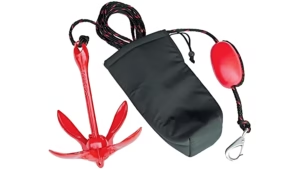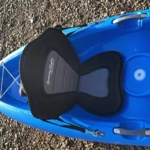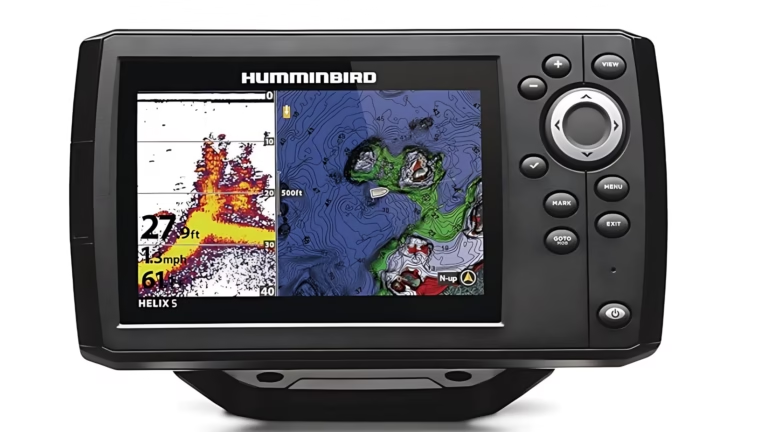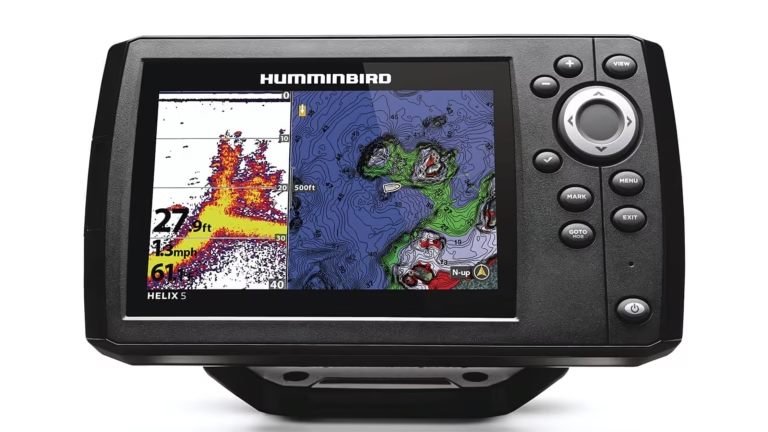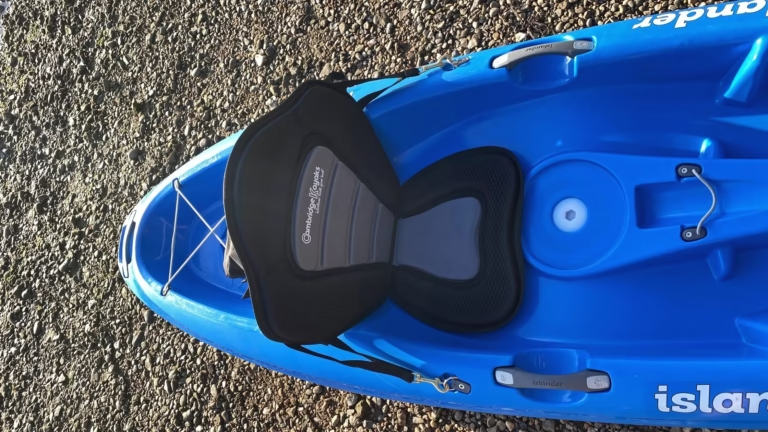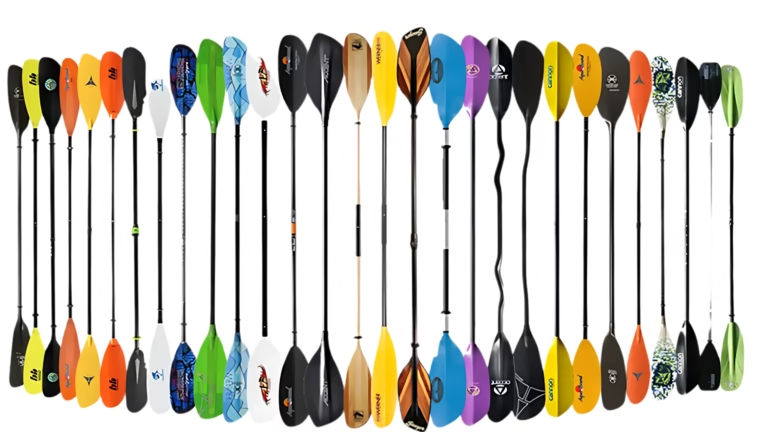The best kayak anchors for fishing are the Danforth-style anchor and the grapnel anchor. These anchors provide excellent holding power and versatility.
Fishing from a kayak offers a unique and immersive experience. Choosing the right anchor ensures stability and control in various water conditions. The Danforth-style anchor, known for its fluke design, works well in sandy or muddy bottoms. Meanwhile, the grapnel anchor, with its foldable arms, is perfect for rocky or coral surfaces.
Both anchors are compact and easy to store, making them ideal for kayak fishing. Investing in a high-quality anchor enhances your fishing experience, allowing you to stay in the desired spot without drifting. Make your fishing trips more successful and enjoyable with the right kayak anchor.
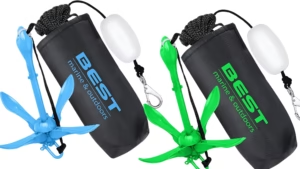
Types Of Kayak Anchors
Choosing the right kayak anchor is crucial for a successful fishing trip. Different types of anchors offer unique benefits. Understanding the types will help you make an informed decision.
Grapnel Anchors
Grapnel anchors are popular among kayak anglers. They feature foldable arms, making them compact and easy to store. These anchors are ideal for rocky or weedy bottoms. The arms dig into the surface, providing a firm hold.
Mushroom Anchors
Mushroom anchors resemble a mushroom cap. They are best for muddy or sandy bottoms. Their design allows them to create suction, keeping your kayak in place. They are also easy to retrieve and less likely to get stuck.
Claw Anchors
Claw anchors are versatile and provide excellent holding power. They are effective in various bottom types, including sand, rock, and mud. The claw design allows for a quick and strong grip, ensuring stability in different conditions.
Drift Anchors
Drift anchors are different from traditional anchors. They are designed to slow down your kayak rather than stop it. Drift anchors are perfect for fishing in strong currents or windy conditions. They help maintain a steady position, making it easier to fish.
| Anchor Type | Best For | Advantages |
|---|---|---|
| Grapnel Anchors | Rocky or Weedy Bottoms | Compact, strong hold |
| Mushroom Anchors | Muddy or Sandy Bottoms | Creates suction, easy to retrieve |
| Claw Anchors | Various Bottom Types | Versatile, strong grip |
| Drift Anchors | Strong Currents, Windy Conditions | Slows down kayak, steady position |
Choosing the right anchor can make your fishing trip more enjoyable. Consider the bottom type and conditions to select the best anchor for your needs.
Top Picks For 2024
As we sail into 2024, finding the best kayak anchors for fishing is crucial. Anchors keep your kayak steady and let you focus on catching fish. Here are the top picks for 2024 to help you choose the best anchor for your needs.
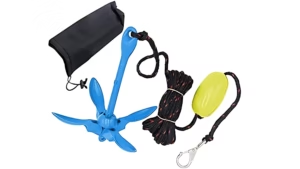
Best Overall
The YakGear Deluxe Anchor stands out as the best overall. It’s reliable and durable. This anchor offers excellent holding power. It weighs 3.3 pounds and works well in different conditions. The galvanized coating ensures it lasts long. Users love its easy setup and secure hold.
Best Budget Option
If you’re looking for value, the Airhead Complete Grapnel Anchor System is your best choice. This anchor system is affordable and effective. It includes a 3.5-pound anchor, a 25-foot marine-grade rope, and a storage bag. The folding design makes it easy to store. Despite its low price, it performs well in calm waters.
Best For Heavy Currents
In heavy currents, the Extreme Max 3006.6548 BoatTector Anchor is a top pick. This anchor offers outstanding grip in strong currents. It has a 5.5-pound weight and is perfect for river fishing. The fluke design ensures it digs deep into the riverbed. Its vinyl coating prevents rust and damage.
Best For Rocky Bottoms
For rocky bottoms, choose the Danielson Galvanized Folding Anchor. This anchor excels in gripping rocky surfaces. It weighs 3.5 pounds and features four flukes that fold for easy storage. The galvanized finish adds durability. Anglers appreciate its strong hold and compact design.
Materials And Durability
Choosing the right kayak anchor ensures stability while fishing. The material and durability of the anchor are crucial. This guide explores different materials used in kayak anchors, highlighting their strengths and weaknesses.
Stainless Steel Anchors
Stainless steel anchors are known for their corrosion resistance. They are highly durable and withstand harsh marine environments. This makes them a popular choice among anglers. They have a polished surface, adding an aesthetic appeal to your gear. Stainless steel anchors are heavy, which provides great holding power. Their weight can be a disadvantage in shallow waters. Here’s a quick overview:
| Pros | Cons |
|---|---|
| Corrosion-resistant | Heavy |
| Highly durable | Costly |
| Aesthetic appeal |
Galvanized Steel Anchors
Galvanized steel anchors are coated with a layer of zinc. This coating provides excellent rust resistance. They offer a balance between durability and affordability. These anchors are less expensive than stainless steel. They are also lighter, making them easier to handle. Galvanized steel anchors are susceptible to chipping. Once the zinc layer is damaged, rust can set in. Here’s a summary:
| Pros | Cons |
|---|---|
| Rust-resistant | Prone to chipping |
| Affordable | Less durable than stainless steel |
| Lighter than stainless steel |
Plastic And Composite Anchors
Plastic and composite anchors are lightweight and inexpensive. They are easy to handle and transport. These anchors do not rust, making them ideal for freshwater fishing. They lack the strength of metal anchors. Plastic anchors may struggle in strong currents or windy conditions. Composite materials provide better durability than pure plastic. Here’s a brief comparison:
| Pros | Cons |
|---|---|
| Lightweight | Not suitable for strong currents |
| Inexpensive | Less durable |
| Rust-proof |
Weight And Size Considerations
When selecting the best kayak anchors for fishing, weight and size are crucial. These factors influence the anchor’s performance and ease of use. Choosing the right weight and size ensures stability and convenience while fishing. Let’s explore these considerations in detail.
Choosing The Right Weight
The weight of your anchor is vital. Too light and it may drift. Too heavy and it becomes cumbersome. Consider the following:
- For calm waters, a 1.5-3 pound anchor is ideal.
- In moderate currents, a 3-5 pound anchor works best.
- For strong currents, opt for a 5-7 pound anchor.
Compact Versus Large Anchors
Size also matters. Compact anchors are easy to store and handle. They are perfect for small kayaks and short fishing trips. Large anchors provide better hold in rough waters. They are suitable for larger kayaks and extended outings.
| Anchor Type | Weight Range | Best Use |
|---|---|---|
| Grapnel Anchor | 1.5-3 lbs | Calm Waters |
| Fluke Anchor | 3-5 lbs | Moderate Currents |
| Plow Anchor | 5-7 lbs | Strong Currents |
Choose the anchor that fits your fishing environment. Balance weight and size for the best performance.
Anchor Ropes And Chains
Anchor ropes and chains are vital for kayak fishing. They secure your kayak in place. This ensures you stay steady while fishing. The right choice can make a big difference.
Choosing The Right Length
Choosing the right length for anchor ropes and chains is crucial. The length depends on the water depth. A good rule is to use a length that is 7 times the water depth. This helps the anchor hold better.
For shallow waters, shorter lengths work well. In deeper waters, longer lengths are needed. This helps in maintaining a strong hold. It prevents the kayak from drifting away.
Material Choices For Ropes And Chains
Material choices for ropes and chains matter a lot. Nylon ropes are popular. They are strong and flexible. They also resist abrasion well.
Polypropylene ropes are another option. They are lighter and float on water. They are less durable than nylon, though. For chains, galvanized steel is a common choice. It is durable and rust-resistant.
A combination of rope and chain often works best. The chain helps the anchor dig in. The rope provides flexibility and ease of handling.
| Material | Pros | Cons |
|---|---|---|
| Nylon Rope | Strong, Flexible, Abrasion-resistant | Can sink |
| Polypropylene Rope | Light, Floats | Less durable |
| Galvanized Steel Chain | Durable, Rust-resistant | Heavier |
Installation And Usage Tips
Installing and using a kayak anchor correctly can make your fishing trips more enjoyable. Here are some tips on proper anchor deployment, retrieval, and safety considerations.
Proper Anchor Deployment
Deploying your kayak anchor properly is crucial for stability and safety. Follow these steps:
- Choose the right spot: Avoid areas with strong currents or heavy vegetation.
- Lower the anchor slowly: Let the anchor sink without splashing.
- Set the anchor: Pull the rope gently until you feel resistance.
- Secure the rope: Tie the rope to a cleat or a secure point on your kayak.
Tips For Retrieval
Retrieving your kayak anchor can be tricky. Use these tips to make it easier:
- Position yourself: Align your kayak with the anchor rope.
- Pull steadily: Use smooth, even pulls to bring up the anchor.
- Check for obstacles: Ensure the rope is free of debris and tangles.
- Secure the anchor: Store the anchor properly to avoid damage.
Safety Considerations
Safety should always be a priority. Keep these points in mind:
- Wear a life jacket: Always wear a life jacket while kayaking.
- Avoid strong currents: Stay away from areas with strong currents.
- Check weather conditions: Ensure the weather is calm before deploying the anchor.
- Use a quick-release system: Install a quick-release system for emergencies.
Following these tips can help you use your kayak anchor safely and effectively. Happy fishing!
Maintenance And Care
Proper maintenance and care of your kayak anchor is crucial. It ensures longevity and effective performance. This section covers essential tips and steps for keeping your kayak anchor in top condition.
Cleaning And Storage
Regular cleaning prevents rust and prolongs the anchor’s life. After each fishing trip, rinse the anchor with fresh water. Remove any dirt, salt, or debris.
Dry the anchor completely before storing it. This helps to avoid corrosion. Store the anchor in a cool, dry place. Use a storage bag to protect it from moisture and dust.
Checking For Wear And Tear
Inspect the anchor regularly for signs of wear and tear. Look for any cracks, bends, or rust spots.
Check the anchor rope or chain for frays or weak points. Ensure the locking mechanism is functioning properly. A quick inspection before each trip can prevent accidents.
Replacing Parts
Some anchor parts may need replacement over time. Keep an eye on the anchor shackle, rope, and other components.
Replace the anchor rope if it shows signs of wear. Use high-quality materials for replacements to ensure safety.
Consult the manufacturer’s guide for specific replacement parts. This ensures compatibility and maintains the anchor’s effectiveness.
Frequently Asked Questions
What Is The Best Kayak Anchor For Fishing?
The best kayak anchor for fishing depends on your needs. Popular choices include grapnel, mushroom, and claw anchors.
How Heavy Should A Kayak Anchor Be?
A kayak anchor should weigh between 1. 5 to 3. 5 pounds. The weight depends on water conditions and kayak size.
Do I Need An Anchor Trolley For Kayak Fishing?
An anchor trolley is recommended for kayak fishing. It allows you to easily adjust the anchor’s position.
Can I Use A Regular Boat Anchor For My Kayak?
Using a regular boat anchor for a kayak is not ideal. Kayak-specific anchors are lighter and more suitable.
Conclusion
Choosing the right kayak anchor enhances your fishing experience. A reliable anchor keeps you steady in any water condition. Consider weight, type, and ease of use when selecting. The best kayak anchor will provide stability and peace of mind. Happy fishing with the perfect anchor!

